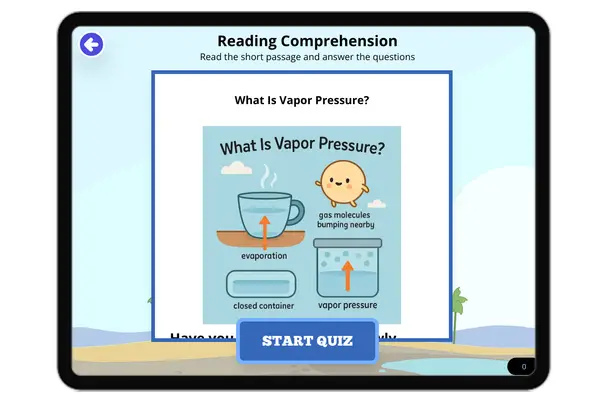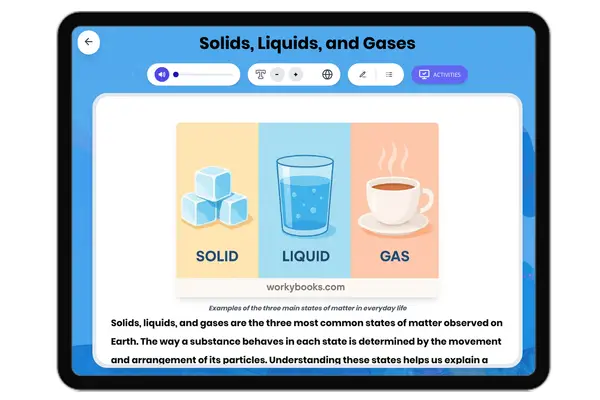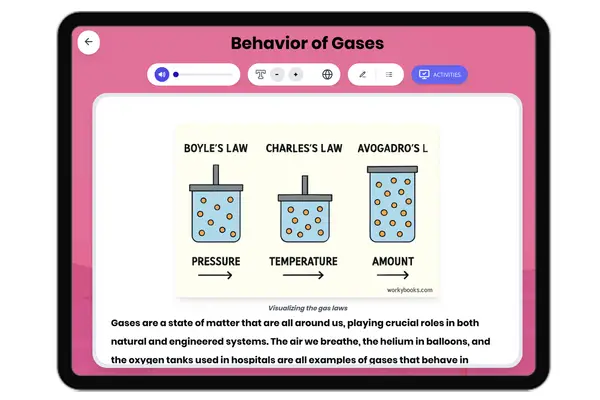Is Sublimation Endothermic or Exothermic? — Reading Comprehension
Premium Resource
Grades
- 5
- 6
- 7
- 8
Standards
- MS-PS1-4
- HS-PS1
PRINT+DIGITAL RESOURCE
This learning resource is available in interactive and printable formats. The interactive worksheet can be played online and assigned to students. The Printable PDF version can be downloaded and printed for completion by hand.
About This Reader
This NGSS-aligned science passage for middle school explains the thermodynamic nature of sublimation, showing how a solid changes directly into gas through an endothermic process. Students will learn why energy is absorbed during sublimation, using dry ice as a real-world example. The passage supports NGSS standard MS-PS1-4 and reinforces critical thinking and reading comprehension with multiple-choice questions that test understanding, inference, and scientific vocabulary. Ideal for classroom use or independent study, this resource strengthens students' knowledge of physical science and enhances their ability to analyze scientific texts. The content builds a strong foundation in phase changes and thermodynamics aligned with middle school learning goals.
Perfect For:
👩🏫 Teachers
- • Reading comprehension practice
- • Auto-graded assessments
- • Literacy skill development
👨👩👧👦 Parents
- • Reading practice at home
- • Comprehension improvement
- • Educational reading time
🏠 Homeschoolers
- • Reading curriculum support
- • Independent reading practice
- • Progress monitoring
Reading Features:
📖
Reading Passage
Engaging fiction or nonfiction text
❓
Comprehension Quiz
Auto-graded questions
📊
Instant Feedback
Immediate results and scoring
📄
Printable Version
Download for offline reading
🔊
Read Aloud
Voice-over with word highlighting




















